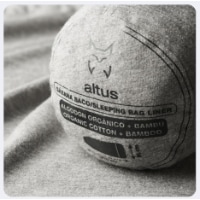What is the problem actually? That two pilgrims fight with each other in the streets of Portomarin? That some Camino pilgrims can not live out their dream of freedom in the form of never having to book their accommodation? That the Camino is no longer what it was when one walked it for the first time? The pollution that some Camino pilgrims create along the trail? I had a quick look at the PCT website and their Strategy of Visitor Management. They have a "multi-pronged approach":
- Focus on influencing trail user behavior by encouraging Leave No Trace (LNT) practices.
- Focus on making the trail more resilient.
- Sometimes necessary in popular areas (though as a last resort): limit the total number of users through permit systems.
On the first point, they write that
many PCT users, whether out for a day or attempting a longer trip, are relatively inexperienced and unfamiliar with Leave No Trace (LNT) principles that reduce their impact on the land. In recent years, PCTA staff and volunteers dramatically increased the quantity and quality of LNT-related articles in print, on our website, and social media to encourage users to protect the trail for others to enjoy.
How much is being done in this respect for Camino pilgrims? Not a lot I think. Indignant comments about toilet paper and human waste are posted on social media platforms such as this forum that are presumably mainly read by those who already practice LNT principles, a poster about 'best practices' to reduce the noise caused by groups who are singing (religious?) songs accompanied by timpani and trumpets while marching through the (is it San Pedro?) neighbourhood, a decree by the Santiago administration about a prohibition of picnics on the Obradorio square that may or may not be posted in some corner of the square ...
Most locals would be in favour of turning stretches of public roads and paths into a space 'for pilgrims only'? Why would they? My uninformed guess is that most locals don't lie awake at night at the thought that the Camino is no longer what it was. And if some pilgrims don't come any more or ever again, plenty will still come.
There are too many visitors / tourists / walkers in so many places. A sign of the increasing popularity of doing something for one's physical and mental well-being by being out in the open air, changing the daily scenery, being physically active at a slow pace.
I sympathize with the concerns about Camino crowds. But permits in a large area that it is primarily not a nature park but a cultivated/cultural landscape and townscape? I don't see it coming.
At one end of the Camino Francés where the bottleneck Roncesvalles is, there is a building that could be renovated to house pilgrims - then high demand for beds during a few weeks of the year could be met. It is not publicly known whether there is no interest to invest or a lack of funds or other issues that prevent this project. At the other end, the regional administration of Galicia keeps on creating their cheap public albergues (cheap for the user and sometimes with flabbergastingly high costs for the renovation work) and say that pilgrims should come at other times than during peak season and walk the less frequented last 100 km than those from Saria.




























